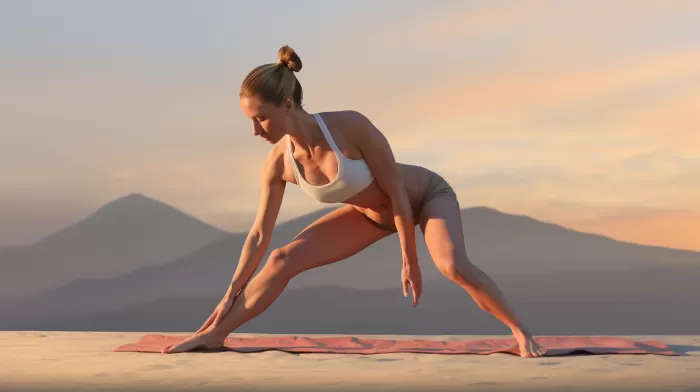Time is of the essence in today’s fast-paced world, so choosing an efficient and effective fitness routine is vital. When it comes to exercise, the best ones are those that do more than one thing simultaneously. Enter yoga’s “upward dog, downward dog” routine. This two-movement sequence both strengthens and stretches the body and doesn’t take up much time either.
Working Your Kinetic Chains
One of the advantages of this particular exercise is that it works both your posterior and anterior kinetic chain. This means with one exercise, you are working an entire series of connected muscles along the front side of your body and also along the backside of your body. You get a full body workout, a full body stretch, while allowing the myofascial tissue of the entire body to shift in positive ways.
Downward Dog Position
To get into the downward dog position, you can either:
- Bend forward from standing to place your hands flat on the floor.
- Begin from a kneeling position and lift your buttocks up off the ground.
Once in the position, you want a straight slant from your hips to your head, and allow the shoulders to be relaxed. Lock your arms out by pushing your hands into the floor for support and stability. Reach your tailbone upward as if trying to touch the ceiling. And really press your heels into the ground for support and a good stretch.
If you are not flexible, your heels can come up off the ground for now. Ultimately, you want to strive to have the feet flat and heels pressed flat.
Upward Dog Position
To get into the upward dog position, press your hips down toward the ground and lift your head up. Look up at the ceiling and allow your weight to rest naturally in the curvature of your body. In this position, your hands remain flat and pressed to the floor and arms locked straight; however, you are now balancing on the balls of your feet. Don’t force anything and try to relax in this position.
To return to the downward dog position, raise your hips up toward the ceiling and lower your head toward the ground.
Two Exercises for Optimal Benefit
There are two ways to do “upward dog, downward dog” for optimal benefit:
- For repetition, which strengthens the body while improving range of motion and connection.
- For holding, which helps muscle strength endurance, and gives a deep body stretch in each position.
Repetitions Exercise
For repetitions, start by doing 10 up/down combinations. Do them smoothly and steadily, and at a good pace, breathing in as you go into the upward position, and breathing out as you move back into the downward position. Be sure to move back and forth into correct positions each time.
Holding Exercise
For endurance, you want to move slower and hold each position for a period of time. This will be as long as you like, but at least enough to feel the stretch and tone the muscles. For these, breathe naturally and steadily, no holding the breath. Melt into the stretch and hold for 5 complete breaths in each position before slowly moving into the other.
The Benefits of Yoga
Yoga is known for its numerous physical and mental health benefits. Practicing yoga can increase strength, flexibility, balance, and overall physical fitness. It can also help reduce stress, anxiety, and depression, and improve mental clarity and focus. According to a study published in the Annals of Internal Medicine, practicing yoga can even help alleviate chronic lower back pain.
Incorporating Yoga Into Your Routine
With so many benefits, yoga is an excellent addition to any fitness regimen. The upward dog and downward dog sequence is a great place to start, but there’s so much more you can explore. There are countless yoga poses and routines available online and through yoga classes, many of which cater specifically to different fitness levels, goals, and preferences.
Yoga is also a very versatile practice and can be easily modified to meet your needs and capabilities. Props like yoga blocks, straps, or blankets can make poses more accessible for all levels of practitioners. Remember, it’s essential to listen to your body and make adjustments to your practice to ensure safety and optimal results.
Final Thoughts
Integrating yoga into your fitness routine doesn’t have to be complicated. Simple and effective, the upward dog and downward dog sequence targets both the anterior and posterior kinetic chains, providing a full-body workout and stretch. Incorporate these movements into your regular exercise regimen and experience first-hand how yoga can help improve your strength and flexibility. So why wait? Get started now and take the first steps towards enjoying the many rewards yoga has to offer.



